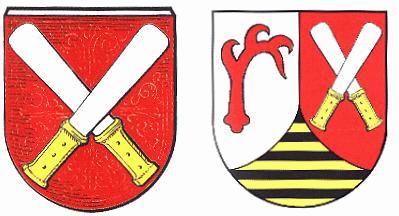Quedlinburg (kreis): Difference between revisions
Knorrepoes (talk | contribs) m (Text replacement - "{{de}}" to "") |
Knorrepoes (talk | contribs) m (Text replacement - "{| class="wikitable"↵|+Official blazon↵|-↵|'''German'''↵| ↵|-↵|'''English''' ↵| {{blazon wanted}}↵|}" to "{| class="wikitable" |+Official blazon |- |'''German''' | blazon wanted |- |'''English''' | blazon wanted |}") |
||
| Line 13: | Line 13: | ||
|- | |- | ||
|'''German''' | |'''German''' | ||
| | | blazon wanted | ||
|- | |- | ||
|'''English''' | |'''English''' | ||
| | | blazon wanted | ||
|} | |} | ||
Revision as of 07:13, 6 April 2023
QUEDLINBURG (QLB)
State : Sachsen-Anhalt
Incorporated into : 2007 Harz
Additions : 1950 Ballenstedt, Blankenburg (partly); 1994 Aschersleben (partly)
| German | blazon wanted |
| English | blazon wanted |
Origin/meaning
The arms were granted on July 7, 1939 and the new arms on September 24, 1990.
The arms are taken from the arms of the Abbey of Quedlinburg (Reichsstift), founded in 935 by Henry I of Saxony as a convent for rich Saxon noble girls. The abbey was highly independent and became a part of Prussia in 1802. The knives are special knives used at a buffet (Kredenzmesser)In the new arms the knives of the old arms were combined with symbols of the two other historical parts of the county, the antler of the county Regenstein and the fesses of the county Ballenstedt.
Literature: Papendieck, H. : Die Wappen der Landkreise und kreisfreien Städte des Landes Sachsen-Anhalt. Landesarchiv Magdeburg, 1996.
